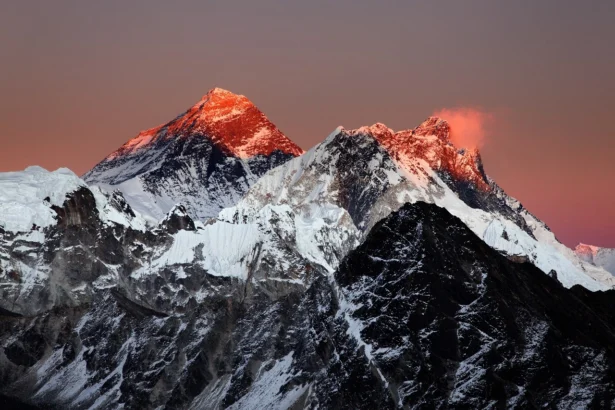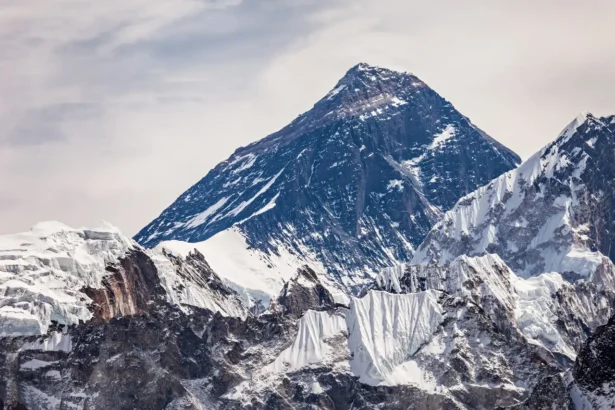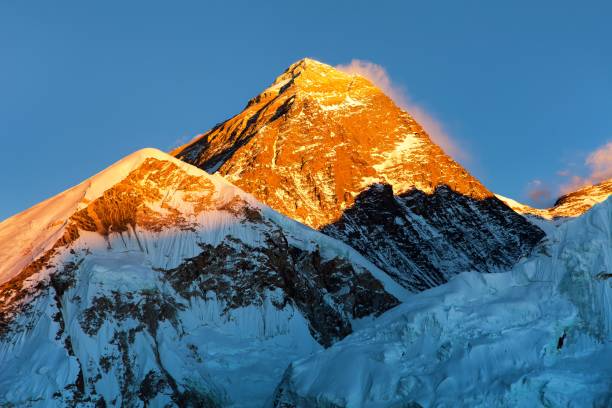Nepal which is known as the “Country of Mountains” is home to some of the world’s majestic and iconic mountains. The mighty Mt. Everest, the highest point on Earth, attracts adventurers and mountaineers from across the globe lies here. Out of the fourteen world’s highest mountains, Nepal has eight globally recognized mountains above 8,000m and 1310 peaks of 6000m. The mountains of Nepal are famous for trekking, with thousands of travelers visiting the country every year to explore the beautiful landscapes.
The mountains and mountain ranges in Nepal are the things that make the country a popular tourist spot. The mountains of Nepal are not only stunningly beautiful, but they also offer excitement and fun things to do during vacation. Hence, Nepal is regarded as the premier location for mountain adventurers and lovers.
Read on to discover more about Nepal’s top eight tallest mountains.
Top 8 Highest Mountains of Nepal
Let’s thrive into top eight mountains of Nepal with Everest (8,849m), Kanchenjunga (8,586m), Lhotse (8,516m), Makalu (8,463m), Cho Oyu (8,201m), Dhaulagiri (8,167m), Manaslu (8,163m) and Annapurna I (8,091m).
1. Mt Everest: Highest Peak of the World
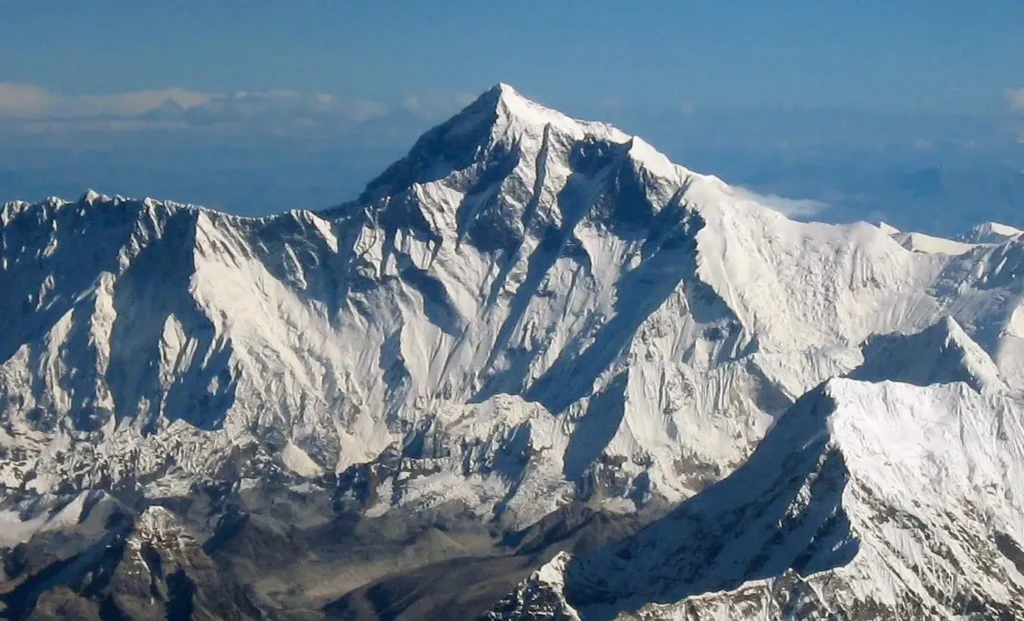
Elevation of Mt. Everest: 8849 m
8849m
Elevation
Lukla
Starting Point
130km
Trek Length
1
World Rank
Mahalangur Himalayan Range
Area
Area: Mahalangur Himalayan Range
Starting Point: Lukla
Trek Length: 130 km Up to Everest base camp.
World Rank: 1
Mt Everest, which is 8,849 meters high (29,032 feet), is also called Sagarmatha and Chomolungma in its home country Nepal. It is the highest mountain of Nepal and also in the world. Everest and its region are known for their amazing scenic views of mountains. Climbing Mount Everest has become a popular destination for adventurous mountaineers in recent years. However, scaling Everest is beyond someone’s thinking capacity and demands exceptional physical fitness, mental strength, and technical skills.
For those wanting a more affordable and less difficult way to experience the beauty of Everest, mountain trips are a popular choice. The flights offer tourists a handy and exciting chance to witness the inspiring beauty of the world’s tallest peak without the physical demands and risks connected with hiking.
Among the highlights of the Everest Base Camp Trek a famous site on the trek is Kalapatthar, which is also the last high point for hikers. The village of Kalapatthar is in Nepal’s Khumbu region which lies in Solukhumbu district and is 5545 meters above sea level.
2. Kanchenjunga: The Five Treasures of Snow
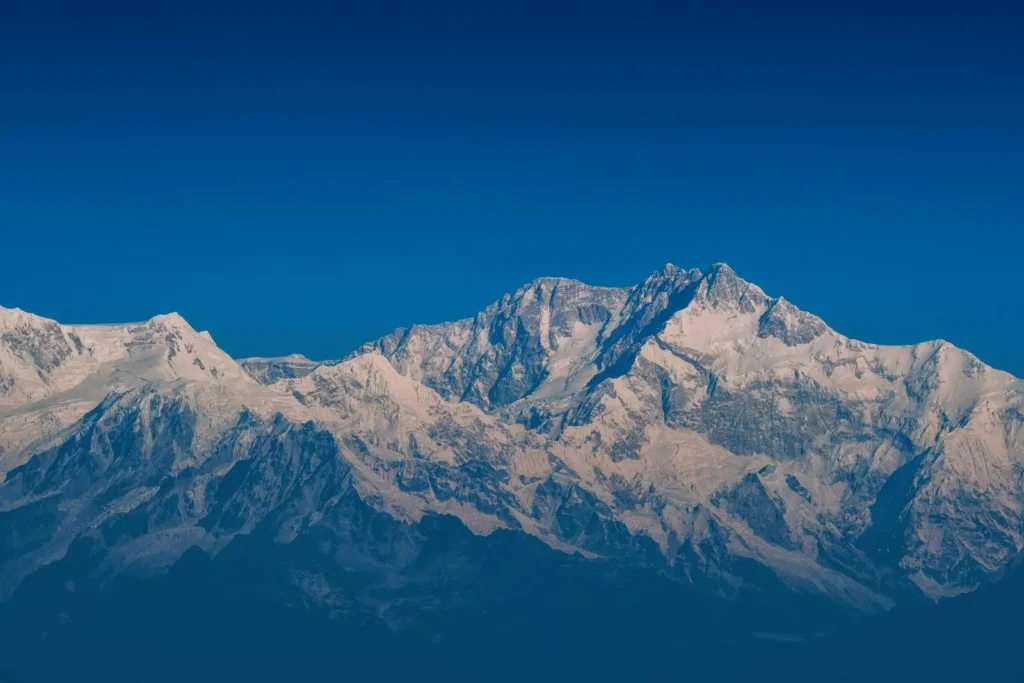
Elevation of Kanchenjunga: 8,586 m
Area: Kanchenjunga Himalayan Range
Starting Point: Taplejung
Trek Length: 220 km
World Rank: 3
Prior to the discovery of K2 and Everest, Mt. Kanchenjunga was thought to be the tallest peak in the world. But after the discovery of two mountains Mt Kanchenjunga is the world’s third highest and second highest mountain of Nepal which lies in the Kanchenjunga Himalayan Range. The range is on the border between Nepal and the Indian state of Sikkim. It is also known as the “Five Treasures of Great Snow” because the mountain has five prominent peaks. The trail is popular for its stunning beauty and challenging ascent.
Kanchenjunga offers an adventurous opportunity to explore remote landscapes and diverse topography with authentic and local aromas. Despite the remote location and challenging landscape these days the number of tourists is increasing.
3. Lhotse: The South Peak
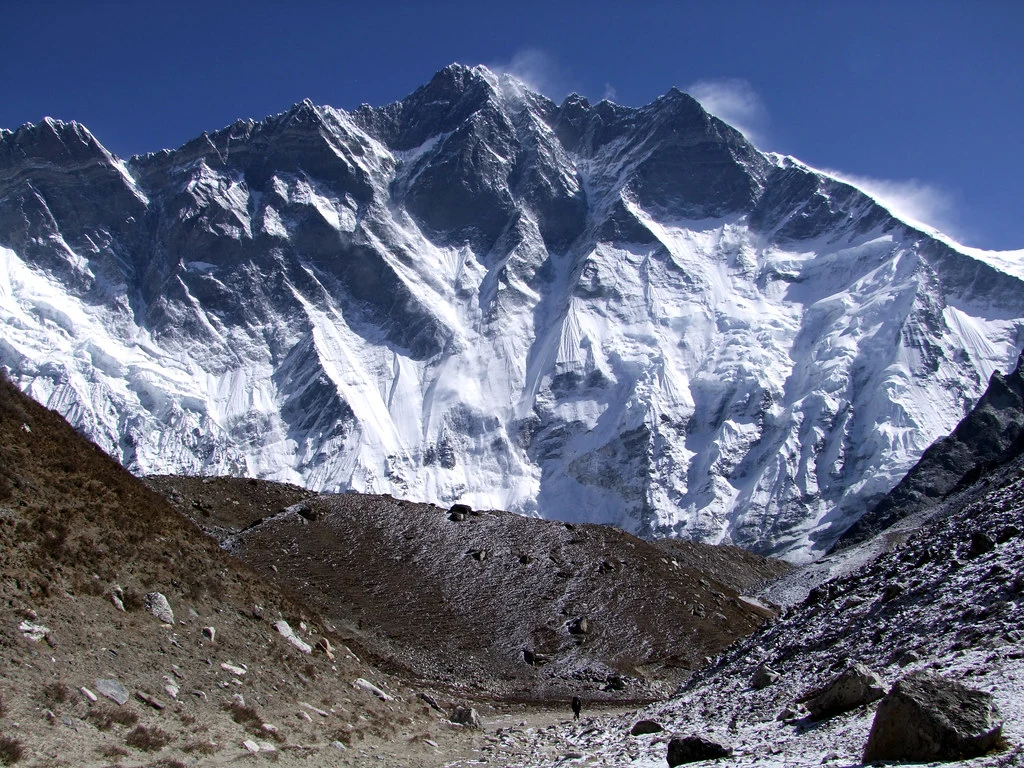
Elevation of Lhotse: 8,516 m
Area: Mahalangur Himalayan Range
Trek Length: 65km
World Rank: 4
Lhotse, towering above the Himalayas at 8,516 meters (27,940 feet), is the world’s fourth-highest peak behind Everest, K2, and Kangchenjunga. Lhotse, which spans the Nepal-China border, is more than simply a mountain, it is an alarming neighbor to Everest, linked by the South Col.
The name Lhotse means “South Peak” in Tibetan which indicates the south location of Mount Everest. Trekking to the base camp of Lhotse offers hikers stunning views of the nearby Himalayan scenery, including neighboring peaks like Everest and Makalu. While Lhotse Base Camp is not as commonly viewed as Everest Base Camp, it offers a satisfying hiking experience for those wanting excitement in the Everest area.
4. Makalu: The Spiritual Mountain
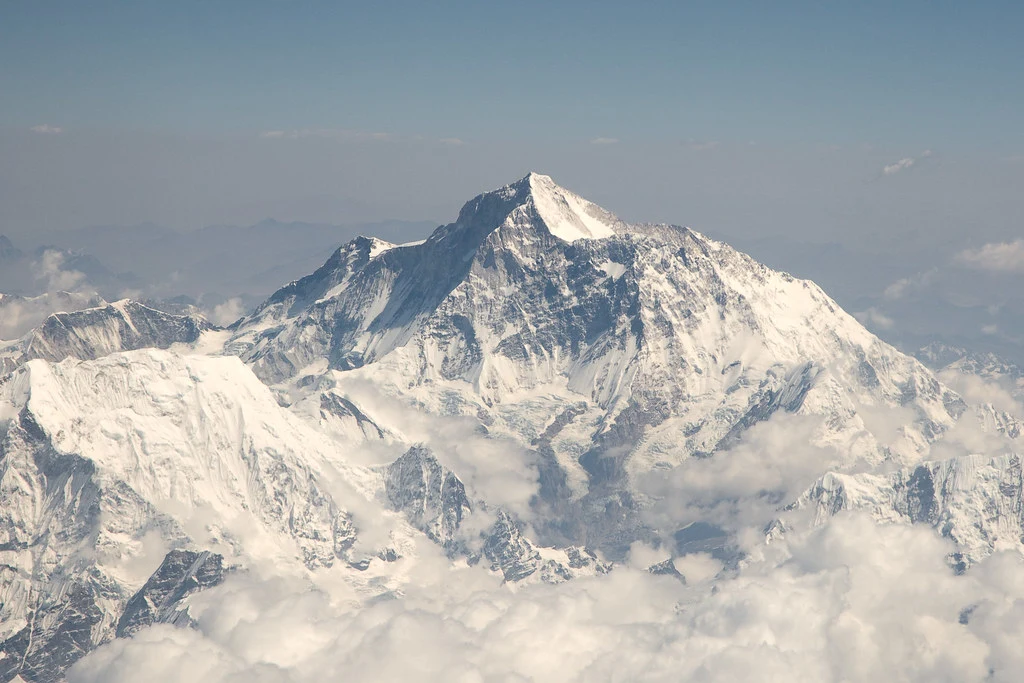
Elevation of Makalu: 8,463 m
Area: Mahalangur Himalayan Range
Starting Point: Tumlingtar
Trek Length: 100 km
World Rank: 5
Mount Makalu is the fifth-highest mountain in the world, with an elevation of 8,485 meters (27,838 feet). It is in the Mahalangur Himalayas, within the Makalu-Barun Valley in the eastern part of Nepal, near the border with Tibet. Situated inside the Makalu Barun National Park, the mountain is renowned for its flawless pyramidal structure including four pointed ridges.
Due to its steep and restricted ascent route, Makalu is considered one of the most difficult 8,000-meter mountains of Nepal. Adventurers looking for a genuine wilderness experience are drawn to the mountain since it is in a pristine and untouched area of the Himalayas. The nearby Makalu-Barun Valley is widely known for its biodiversity, which includes uncommon and endangered species, making it a special location for both mountaineers and nature lovers.
5. Cho You: The Turquoise Goddess
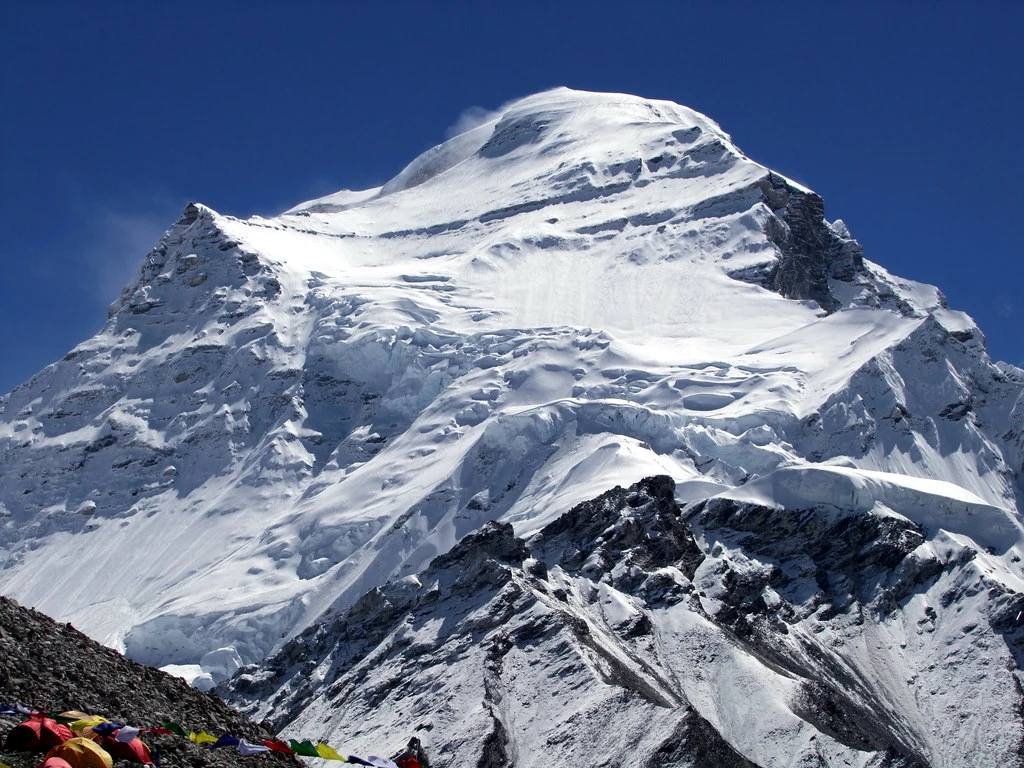
Elevation of Cho You: 8,201m
Area: Mahalangur Range
Starting Point: Lukla via Caravan route
Trek Length: 39.2KM
World Rank: 6
Cho You, at 8,201 meters (269606 feet), is the sixth-highest peak in the world and the fifth-highest mountain of Nepal. In Tibetan, Cho You means “Turquoise Goddess.”
This mountain is best for beginners to climb. It is typically approached from the western face, specifically from the Tibet side. Nevertheless, attempting to climb from Nepal would be very difficult. However, climbing Cho Oyu still requires significant experience, physical fitness, and habituation to extreme altitudes.
6. Dhaulagiri: White Mountains
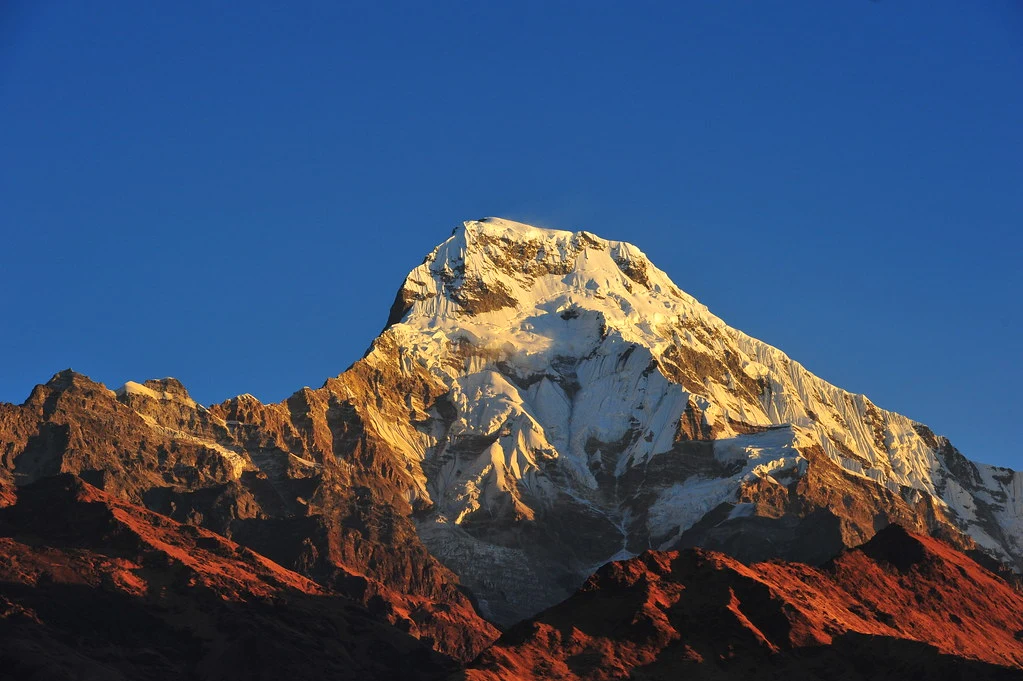
Elevation of Dhaulagiri: 8,167 m
Area: Dhaulagiri Range
Starting Point: Beni
Trek Length: 180KM
World Rank: 7
Dhaulagiri, at 8,167 meters (26794 feet), is the sixth-highest mountain of Neapl and the world’s seventh-highest peak. The mountain peak is spread over 120 km and doesn’t share a border with Tibet. The Annapurna ice field is to the east of the Kaligandaki River, across the deep valley. The river and its branches flow through the north and southwest direction. Across the basecamp trail, there are many waterfalls where you will be greeted by a new waterfall every 15 minutes. Though the trail is extremely difficult, the beauty that surrounds you makes you forget about the hardship. Popular treks and attractions in the Dhaulagiri region are Italy Basecamp, Mustang, and Muktinath.
7. Manaslu: The Killer Mountain
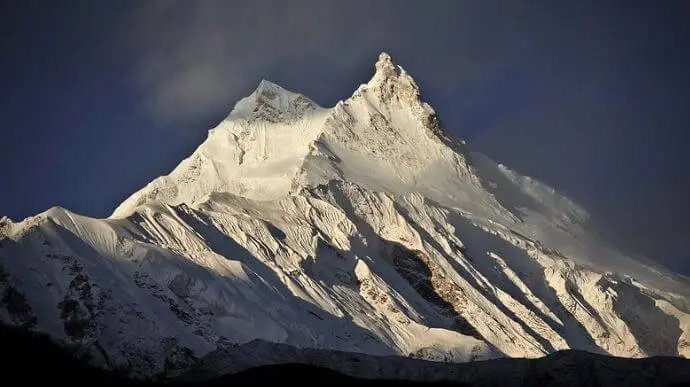
Elevation of Manaslu: 8,156 m
Area: Manaslu Himalaya
Starting Point: Soti Khola
Trek Length: 177KM
World Rank: 8
Mt Manaslu which is situated at the elevation of 8163m (26781Ft) is the seventh highest mountain of Nepal and the eighth highest mountain worldwide. It is known by various names such as Kampunge, Kutang, and also Killer Mountain by locals because of the Dangerous slopes.
The Manaslu circuit trek offers a lot of cool places to discover along the way. The Larkya La pass is the highest point in the trek, for a relaxing break there’s a beautiful Birendra lake where you can soak up the scenery. Also, the various Tibetan Buddhist monasteries like Serang Gompa and Pungyen Gompa are situated which offer spiritual and cultural experiences.
8. Annapurna: Massif
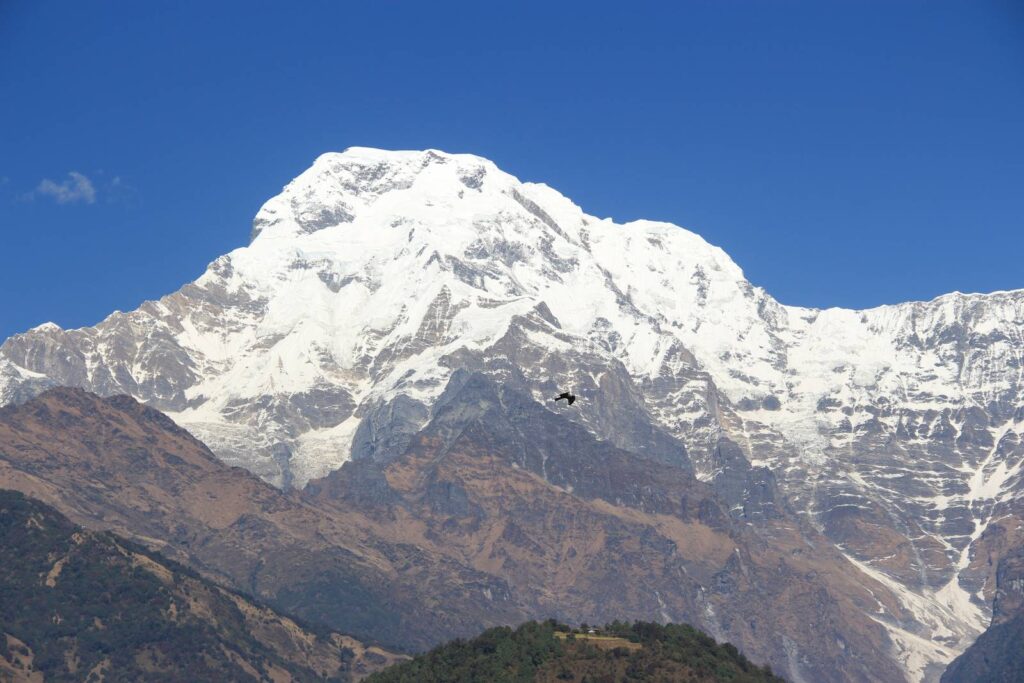
Elevation of Annapurna: 8,091 m
Area: Annapurna Himalaya
Starting Point: Phedi
Trek Length: 110KM
World Rank: 10
Annapurna is the eighth-highest mountain of Nepal and ranks as the tenth-highest mountain globally. It comprises a range of peaks. Among them, Annapurna I stands tallest, reaching an impressive height of 8,091 meters (26,545 feet). Annapurna range includes many peaks over 7,000 meters. The massif is bordered by the Kali Gandaki gorge in the west, the Marshyangdi River in the north and east, and Pokhara Valley in the south.
The Annapurna peaks are among the world’s most hazardous mountains to ascend. The mountain Annapurna is named after the Hindu goddess of food and nutrition who is said to live there.
The route leads through rivers, woods, and hot springs, making it the perfect place to be lost in nature. Its trail also goes through Ghandruk village, where you will learn about the Gurung culture.
Conclusion
In a nutshell, Nepal’s mountains stand as magnificent images of nature’s glory and humanity’s lasting spirit of adventure. From Mount Everest’s high heights to Annapurna’s peaceful beauty, each peak tells a story of victory, toughness, and the unbreakable bond between humans and the natural world.
In the end, it’s not just about reaching the summit, but about the journey itself, the experiences shared, the challenges overcome, and the profound connections established with the mountains and with each other.
Frequently Asked Question (FAQ’s)
-
How many 8000 m peaks are there in Nepal?
Eight out of fourteen eight thousand peaks are situated in Nepal, either entirely or along the borders with India or China.
-
How much does a permit cost to climb Mt Everest?
A permit to climb Mt Everest will cost $11,000 for a foreigner and Rs75,000 for a Nepalese citizen. However, there is a proposal to increase the fee to $15,000 starting in 2025.
-
Can I Hike alone?
According to Nepal’s new rule, which was announced on March 9, 2023, tourists hiking in protected regions such as Nepal’s mountains, must have a certified trekking guide registered with the Nepalese government.
-
Who leads you to the mountains?
Sherpas, a Nepalese ethnic group renowned for their mountaineering skills and superior strength and endurance at high altitudes will lead you to the Himalayas.
-
How much will it cost to climb Everest from Nepal?
Climbing Everest from Nepal costs anywhere from USD 33,000 to $200,000 depending on the expedition type, what’s included, and desired luxuries.
-
What level of fitness is required to climb a mountain?
Physical training such as functional training, cardiovascular training, strength training, flexibility training, and cross-training, is required four to six months in advance. In addition, the individual should have a healthy mental state and participate in meditation programs to improve their mental stability.
-
Which mountains in Nepal cannot be climbed?
Machhapuchhare also known as Fishtail Mountain, which has a distinct double peak and is believed to be a sacred site, is prohibited from climbing.
-
Which 8,000-meter peak is the simplest to climb?
Climbers often consider Cho Oyu, at 8,188 meters, the easiest 8,000-meter peak to climb. It has an image of having relatively soft hills and a well-defined path. However, it’s important to remember that any 8,000-meter peak is still a difficult task.

